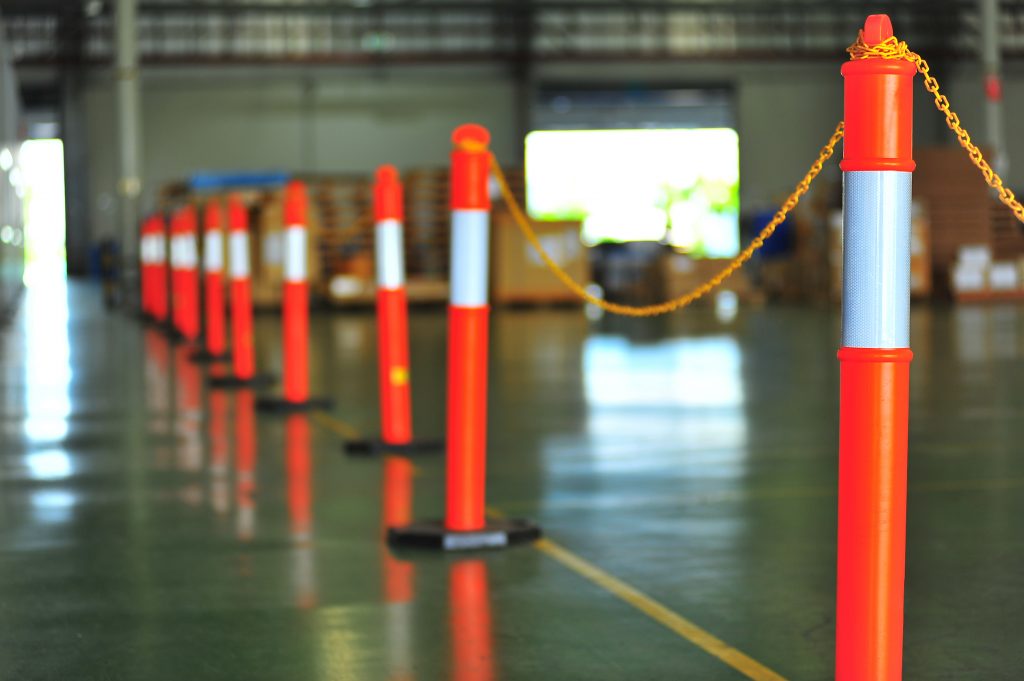
Warehouse safety is a crucial consideration for companies. It consists of protocols based on industry best practices to ensure a safe work environment and reinforce safe behaviour while on the job. Due to the high injury rate in the warehousing industry, employee health and safety should be a top priority.
A warehouse can be a hazardous workplace. With this in mind, it’s critical to fully comprehend the most common dangers and hazards, as they can result in serious injuries and even death in the worst-case scenario.
Using And Maintaining The Racking System Correctly
A conventional Pallet Racking system is common in almost any warehouse for loading, unloading, and storing products. Pallets are supported by steel interior beams attached to the racking system’s external frame.
Poor design, damage, faulty installation, and incorrect loading or unloading, to name a few, are all potential causes of racking system and pallet incidents. When managing the racking system in your warehouse, you should take into consideration the following:
- Calculate the total weight of the loads and ensure they don’t exceed the maximum capacity.
- Implement a reporting system that allows employees to notify you of any possible damage to the racking system.
- Make sure that all faulty or damaged components aren’t used until they’ve been repaired or replaced and are considered safe.
- Allow enough aisle space for forklifts to load and unload pallets safely.
Routine rack safety inspections are also important to ensure the system stays safe and functional. Consider hiring a professional to carry out regular inspections. The frequency of the inspections will depend on the specific operating conditions of your warehouse. Overloading, missing bolts or safety pins, forklift damage, and distorted steel supports, to name a few, are all things to look for during an inspection.
Emphasize The Importance Of Good Ergonomics
Warehouse employees tackle heavy lifting, so it’s safe to provide them with training on proper lifting procedures to avoid injuries.
As part of your safety program, it should include proper ergonomics in the workplace. Generally, it involves correct lifting, proper operation of equipment, and maintaining good posture.
Use Of Correct Personal Protective Equipment (PPE)
Companies should provide all warehouse employees with the appropriate personal protective equipment (PPE). As an employer, it’s your responsibility to provide the proper equipment, train employees to use and care for it, and maintain or replace it.
Some of the common types of PPE that warehouse employees use include hard hats, safety gloves, safety goggles or glasses, safety boots with steel toe caps, high visibility jackets, and overalls.
Require The Installation Of Safety Signage
A warehouse should have obligatory safety signage. The safety signs in warehouses generally covers various categories.
When it comes to danger signs, they indicate the most serious hazards. The warning signs indicate potentially hazardous areas but require less caution than the danger zones. Lastly, the caution signage indicates zones that may potentially result in minor injuries, but it’s crucial to stay cautious.
Warehouse Employee Training And Education
Training for your warehouse employees is a requirement for companies. Each industry has different training requirements.
When deciding on the training programs to offer employees, consider looking for programs applicable to all workers and those that can help with more specific warehouse roles. A training program should include the proper handling and storage of potentially hazardous materials. Depending on the equipment present in your warehouse, employees should also undergo training on the proper use of equipment.
Maintain Warehouse Cleanliness
Cleanliness will always remain an important factor, even in your warehouse. Keeping the warehouse clean will help to improve overall efficiency and safety.
All aisles and walkways must be free of debris and potential trip or fall hazards. To reduce the possibility of accidents, secure or tape down any power cords or hoses scattered on the floor. The installation of anti-slip materials on the floor of the aisles can be a preventive approach.
In general, it’s best to implement an efficient cleaning system to ensure that any mess is dealt with as soon as possible.
Proper Forklift Operation
Forklifts are critical pieces of equipment in warehouses and storage facilities. Proper operation is critical because it has the potential to cause serious harm to the operator, other employees, and products.
All forklift operators should complete a certified training program and refresher training and evaluation to ensure their safety.
Understanding How Conveyors Operate
Conveyors are also present in almost all warehouses and are in charge of moving products from one warehouse to another. Unfortunately, the equipment can be hazardous, particularly if an employee becomes entangled in one or struck by falling objects.
In general, install suitable safeguarding measures between the conveyor and employees to prevent entrapment of hair, clothing, or other body parts.
Furthermore, employees must be familiar with the proper lockout or tag-out procedures during maintenance and repairs.
Proper Handling Of Hazardous Materials
When your warehouse accommodates hazardous materials, employees will face significant hazards. Incorrect handling, storage, and disposal can put one at risk of serious warehouse injuries and even property loss.
Some of the best practices when hazardous materials are present include the following:
- Limit the use of hazardous materials
- Before handling the materials, carefully review the safety data sheet.
- All potentially hazardous materials in the workplace must be properly labelled.
- Using the appropriate personal protective equipment when working or handling hazardous materials
Putting Up Safety Barriers
Safety barriers and gates can also go a long way in maintaining safety in a warehouse. The barriers are useful for directing forklift and employee traffic while effectively and efficiently organizing routes. When adding barriers, go for those in bright colours, ideally neon shades, for the best visibility.
Final Thoughts
Maintaining the safety of a warehouse is a crucial consideration when managing a business. Regardless of the type of business you run, proper warehouse storage and safety must be a top priority. Considering these valuable pointers and practices in warehouse management will keep your operations efficient and productive.

